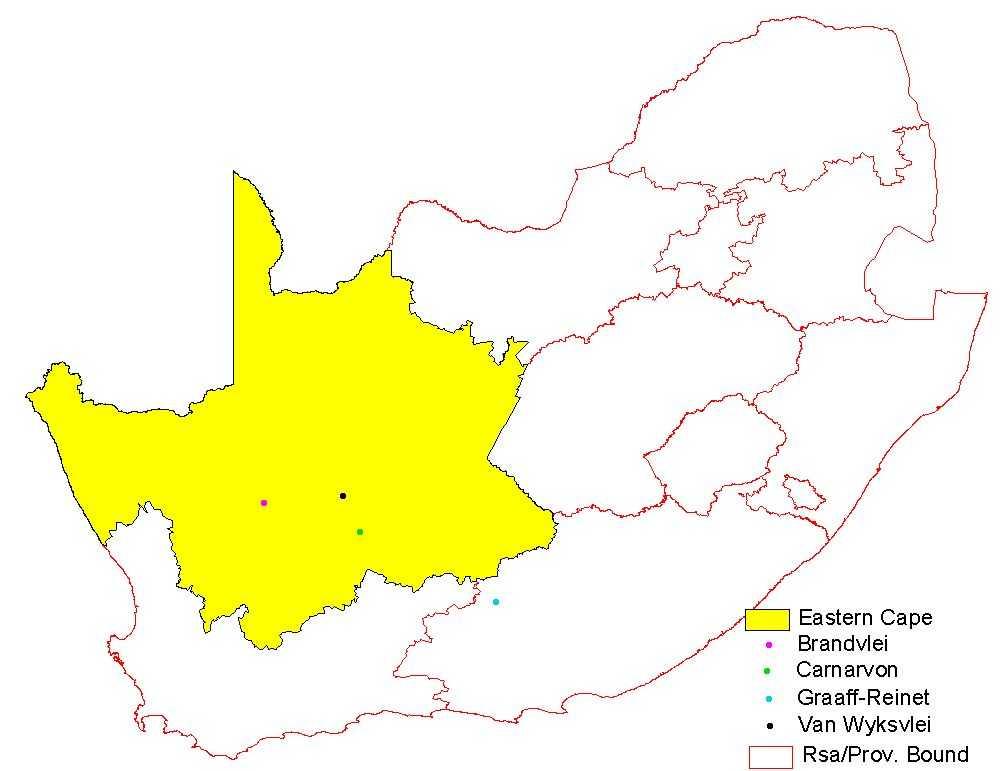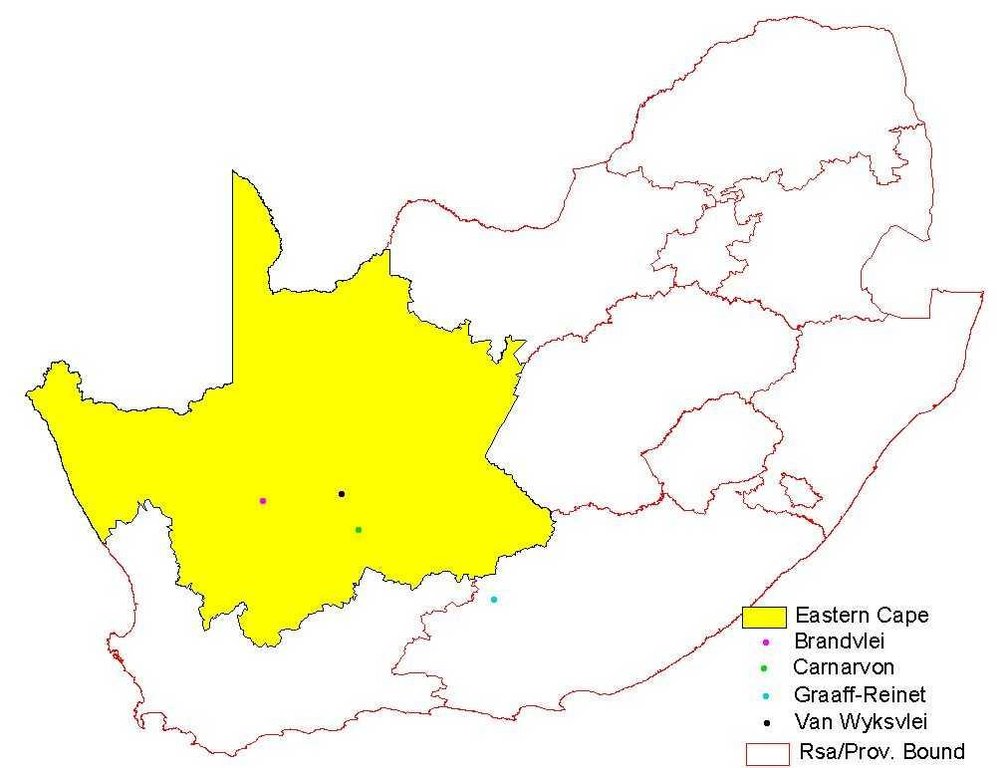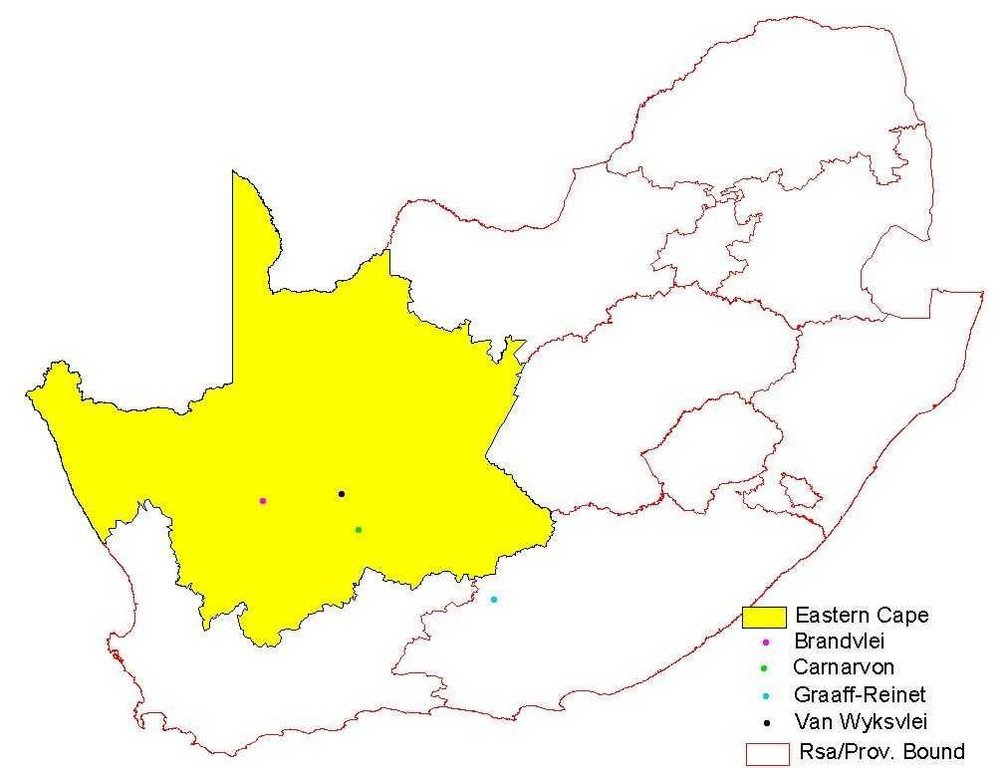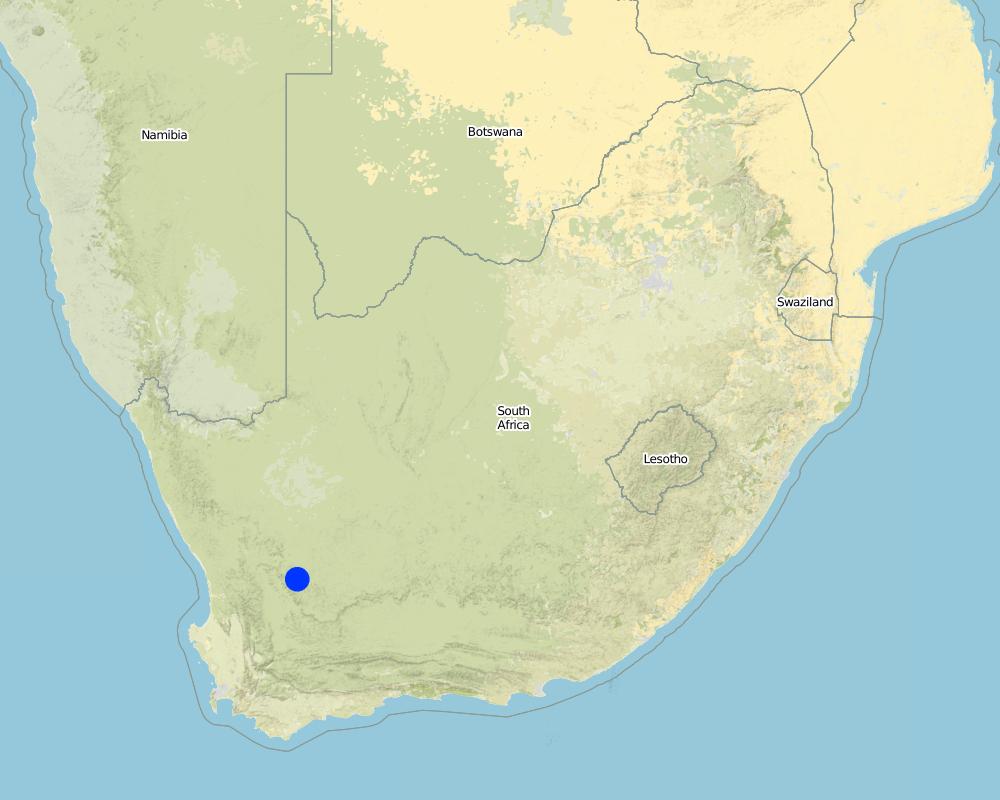Spontaneous adoption [South Africa]
- Creation:
- Update:
- Compiler: Philippe Zahner
- Editor: –
- Reviewer: Fabian Ottiger
approaches_2646 - South Africa
View sections
Expand all Collapse all1. General information
1.2 Contact details of resource persons and institutions involved in the assessment and documentation of the Approach
Name of the institution(s) which facilitated the documentation/ evaluation of the Approach (if relevant)
Swiss Agency for Development and Cooperation (DEZA / COSUDE / DDC / SDC) - Switzerland1.3 Conditions regarding the use of data documented through WOCAT
The compiler and key resource person(s) accept the conditions regarding the use of data documented through WOCAT:
Ja
2. Description of the SLM Approach
2.1 Short description of the Approach
The farmer made a request to the extension office to advise him on how to rehabilitate a barren area on his farm.
2.2 Detailed description of the Approach
Detailed description of the Approach:
Aims / objectives: A farmer contacted the extension office, which investigated and then recommended establishing and planting of Atriplex Nummalaria as a fodder crop and ground cover on the barren area. The farmer was given the necessary information on how to proceed. There is no waiting list. This place was the first one in South Africa where this method was used in the field. The research and adaptations were done at Grootfontein.
2.3 Photos of the Approach
2.5 Country/ region/ locations where the Approach has been applied
Country:
South Africa
Region/ State/ Province:
Eastern Cape
Map
×2.6 Dates of initiation and termination of the Approach
Year of termination (if Approach is no longer applied):
1998
2.7 Type of Approach
- project/ programme based
2.8 Main aims/ objectives of the Approach
The Approach focused on SLM only
To equip the farmer with the necessary information and data to implement the technology. Information: technician drawing the roads, how much plants and how often they must be irrigated.
The SLM Approach addressed the following problems: Lack of expert knowledge by farmer and inexperience labour; cost of establishing crop
2.9 Conditions enabling or hindering implementation of the Technology/ Technologies applied under the Approach
social/ cultural/ religious norms and values
- hindering
Project couldn't be finished in a short period (in 1 year no returns)
Treatment through the SLM Approach: Project was stretch over a period of 3 years
legal framework (land tenure, land and water use rights)
- enabling
The existing land ownership, land use rights / water rights moderately helped the approach implementation: hinder: low
knowledge about SLM, access to technical support
- hindering
Farmer needed advice
Treatment through the SLM Approach: Extension office provided expertise
3. Participation and roles of stakeholders involved
3.1 Stakeholders involved in the Approach and their roles
- local land users/ local communities
Land owner
- national government (planners, decision-makers)
Extension officer
Working land users were mainly men. Men are the landowners hence only them got involved.
- international organization
If several stakeholders were involved, indicate lead agency:
Farmer request advise from extension officer, got all the necessary, decision how to go on was taken together.
3.2 Involvement of local land users/ local communities in the different phases of the Approach
| Involvement of local land users/ local communities | Specify who was involved and describe activities | |
|---|---|---|
| initiation/ motivation | none | |
| planning | none | |
| implementation | none | |
| monitoring/ evaluation | none | |
| Research | none |
3.4 Decision-making on the selection of SLM Technology/ Technologies
Specify who decided on the selection of the Technology/ Technologies to be implemented:
- mainly land users, supported by SLM specialists
Explain:
consultative.
Decisions on the method of implementing the SLM Technology were made by mainly by land users supported by SLM specialists. consultative/land user driven.
4. Technical support, capacity building, and knowledge management
4.1 Capacity building/ training
Was training provided to land users/ other stakeholders?
Ja
Form of training:
- demonstration areas
4.2 Advisory service
Do land users have access to an advisory service?
Ja
Specify whether advisory service is provided:
- at permanent centres
Describe/ comments:
Key elements: give advise, give knowledge; 1) Advisory service was carried out through: government's existing extension system 2) Advisory service was carried out through: government's existing extension system; Extension staff: mainly government employees 3) Target groups for extension: land users; Activities: Advisory
Advisory service is quite adequate to ensure the continuation of land conservation activities
4.3 Institution strengthening (organizational development)
Have institutions been established or strengthened through the Approach?
- no
4.4 Monitoring and evaluation
Is monitoring and evaluation part of the Approach?
Ja
Comments:
economic / production aspects were regular monitored through measurements
area treated aspects were regular monitored through measurements
There were no changes in the Approach as a result of monitoring and evaluation
4.5 Research
Was research part of the Approach?
Ja
Specify topics:
- ecology
Give further details and indicate who did the research:
Research was done by Grootfontein Agricultural Institute on Atriplex nummelaria as a supplementary feed.
Research was carried out on station
5. Financing and external material support
5.1 Annual budget for the SLM component of the Approach
Comments (e.g. main sources of funding/ major donors):
Approach costs were met by the following donors: other (Land owner): 100.0%
The service (extension officer) is free of charge, also the Information from Grootfontein
5.2 Financial/ material support provided to land users
Did land users receive financial/ material support for implementing the Technology/ Technologies?
Nee
5.3 Subsidies for specific inputs (including labour)
If labour by land users was a substantial input, was it:
- voluntary
5.4 Credit
Was credit provided under the Approach for SLM activities?
Nee
6. Impact analysis and concluding statements
6.1 Impacts of the Approach
Did the Approach help land users to implement and maintain SLM Technologies?
- No
- Yes, little
- Yes, moderately
- Yes, greatly
With knowledge he could better manage
Did the Approach improve issues of land tenure/ user rights that hindered implementation of SLM Technologies?
- No
- Yes, little
- Yes, moderately
- Yes, greatly
The problem is unlikely to be overcome in the near future. Easier just to work with one owner
Did other land users / projects adopt the Approach?
- No
- Yes, little
- Yes, moderately
- Yes, greatly
80-90% of the farmers usually come to the extension officer, farmer phone for information and invites the extension officer for a visit and share then information about the area.
6.3 Sustainability of Approach activities
Can the land users sustain what has been implemented through the Approach (without external support)?
- yes
6.4 Strengths/ advantages of the Approach
| Strengths/ advantages/ opportunities in the land user’s view |
|---|
| Participation in decision making |
| Gain knowledge |
| Strengths/ advantages/ opportunities in the compiler’s or other key resource person’s view |
|---|
| Landowner is part of decision making |
| Land users participation in increasing productivity of unproductive land |
| Make landowner aware of conservation and a good management system because of the costs involve in rehabilitation |
6.5 Weaknesses/ disadvantages of the Approach and ways of overcoming them
| Weaknesses/ disadvantages/ risks in the land user’s view | How can they be overcome? |
|---|---|
| Lack of knowledge |
| Weaknesses/ disadvantages/ risks in the compiler’s or other key resource person’s view | How can they be overcome? |
|---|---|
| Expert knowledge is needed | |
| The land user must be aware of a problem and then approach the specialist |
7. References and links
7.1 Methods/ sources of information
- field visits, field surveys
- interviews with land users
Links and modules
Expand all Collapse allLinks
No links
Modules
No modules





